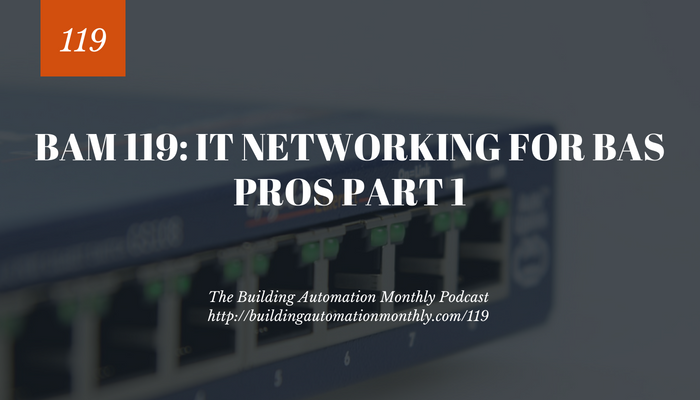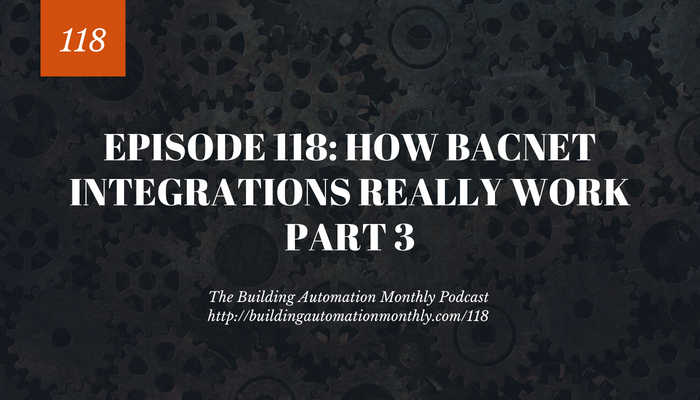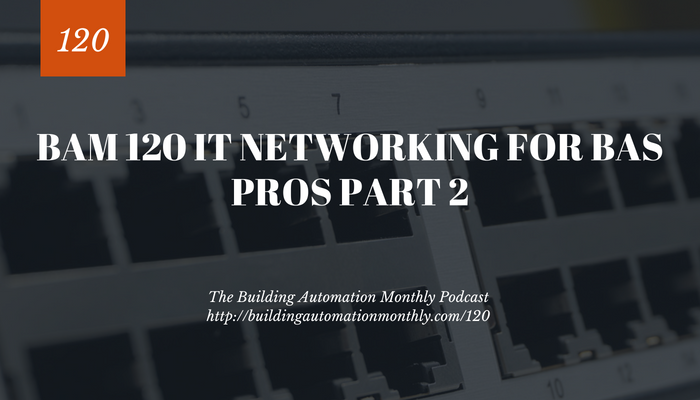What’s the difference between an application port and a switchport?
How do you avoid bandwidth constraints and dropped BAS packets?
If you are planning on having a career in building automation, these are just a few of the challenges you will face. IT networking is becoming a required skill for BAS professionals. But, outside of our IT course, no one is teaching what BAS professionals need to know. And that is why in this week’s episode of the Building Automation Monthly Podcast we will be discussing:
- How BAS devices use the network to communicate
- The different parts and pieces of a BAS network
- The three things you must understand to avoid network issues
- Why you must start learning IT now to futureproof your career
Listen to the episode below.
Click here to download or listen to this episode now.
Ports and Wires
- The one model that makes sense of IT networking (4:20)
- What is the physical layer of networking? (5:55)
- How you can mess up BAS networking and how to avoid it (7:20)
- The different networking devices in a BAS network (8:30)
- How unmanaged switches are different then managed switches (9:25)
- Why physical and logical topologies matter (11:15)
- The two types of ports that you need to know (12:20)
- When to use access links vs trunk links (13:25)
- Why you must embrace the discomfort of speaking like an IT person (15:35)
- The one thing you need to learn about how wired communication happens (17:40)
- The effect of speed on BAS network bandwidth (23:35)
- Why we need to focus in on our networks wiring (26:25)
- The three things we need to remember about wired networks (27:30)
Resources mentioned in this episode
- Information Technology for BAS Professionals Online Course
- BAM TV YouTube Show
- The OSI Model
- BAM 116: How BACnet integrations really work part 1
- BAM 117: How BACnet integrations really work part 2
- BAM 118: How BACnet integrations really work part 3





